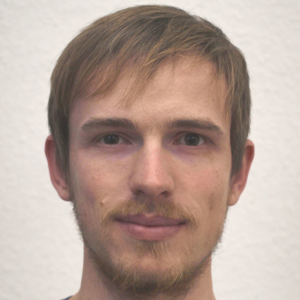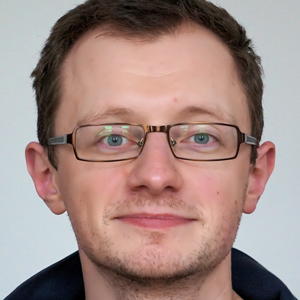S2: Improved Parameterizations and Numerics in Climate Models
Principal investigators: Prof. Ulrich Achatz (Goethe University Frankfurt), Dr. Nils Brüggemann (Max Planck Institute for Meteorology), Dr. Sergey Danilov (Alfred Wegener Institute for Polar and Marine Research), Prof. Carsten Eden (Universität Hamburg), Dr. Johann Jungclaus (Max Planck Institute for Meteorology), Dr. Peter Korn (Max Planck Institute for Meteorology)
Objectives
Based on the work of the first phase of S2 and other subprojects, we will continue in S2 to implement the new and consistent parameterizations and numerical algorithms into the two national climate models: ICON-a/ICON-o and OpenIFS/FESOM2. Together with E3SM (Golaz et al., 2019), the two models developed in Germany are currently the only climate models based on modern, unstructured meshes with the possibility to local refinements, an option which will be used in this CRC as well. We target in this CRC on these two coupled model – both participating in CMIP6 (Eyring et al., 2016a) and other international projects – since they are at the forefront of model development both on global and European scale. As part of the German national climate model development strategy, it is envisioned to push the cooperative development of both models, which is strongly supported by this CRC. Together with subproject S1, where metrics for model performance and energy consistency are developed, S2 will provide an assessment of the effects of improved energetically consistent methods in applications of the coupled ocean and atmosphere models. Three main areas are the focus of S2:
- ocean parameterizations, atmosphere parameterizations, and numerics.
We will implement extended versions of the gravity wave effect closure IDEMIX in the ocean models FESOMand ICON-o, and we will implement a framework of energy-based parameterizations for submesoscale ocean turbulence. For the atmosphere, we will implement two similar, but complementary gravity wave parameterizations (IDEMIX-a and MS-GWaM) into ICON-a. For the numerics, we will continue the implementation of a generalized vertical coordinate framework (ALE) in FESOM and ICON-o, and continue the work on higher-order advection schemes. The implementation of the new energy-based closures in the atmosphere and ocean models represents an important step towards our goal of energetically consistent coupled climate models.
Phase 1
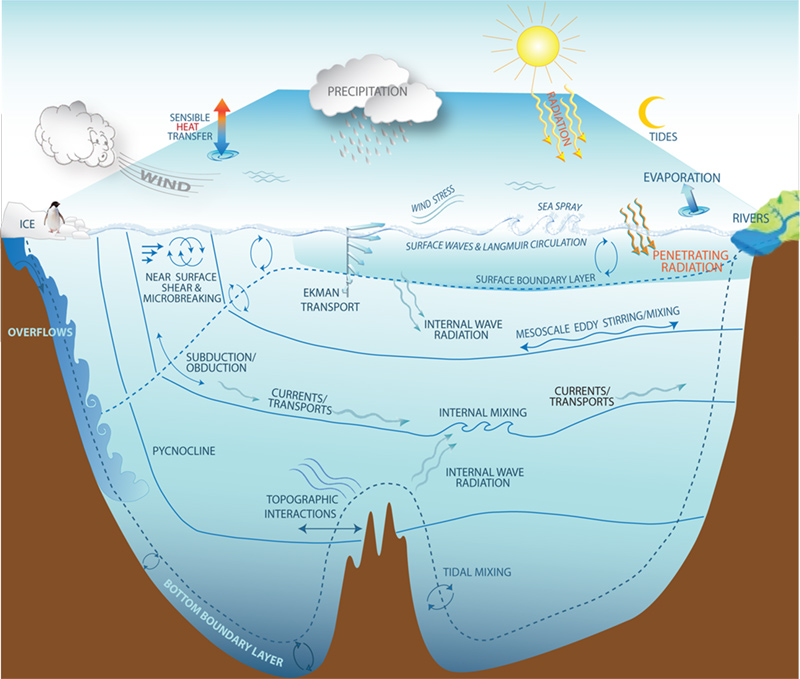
The project aims to implement new parameterisations and numerical algorithms designed to improve the energetic consistency, and elaborated in the framework of this CRC, in the ocean components of the new generation of Earth System Models that are presently developed in Germany. It will also support the development and implementation of new atmospheric parameterisations. The project will interact with other projects of this CRC providing a framework for the synthesis of the collaborative efforts and serve, together with S1, as a metric for its success.
The AWI climate model
The model consists of the FESOM ocean model coupled to the ECHAM6.3 atmosphere model. Coupled configurations with various ocean grids are available.
- FESOM offers multi-resolution functionality
- FESOM works on arbitrary triangular meshes and allows refinements without nesting in the areas of interest
- ECHAM6-FESOM allows climate studies with a multi-scale ocean
Advanced FESOM configurations allow grids to be locally eddy resolving to simulate variability adequately where it is observed.
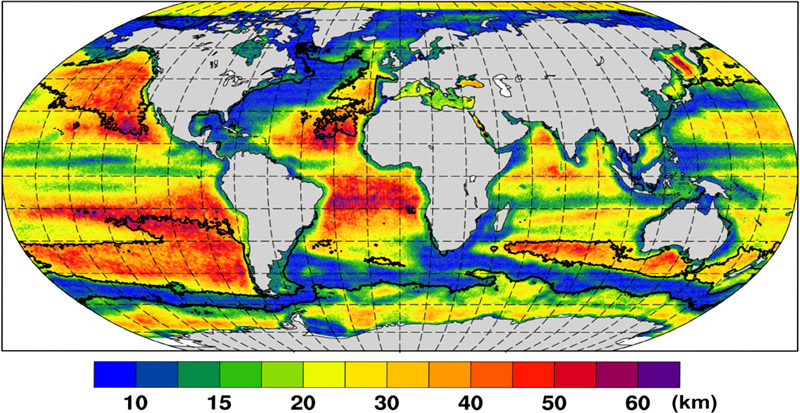
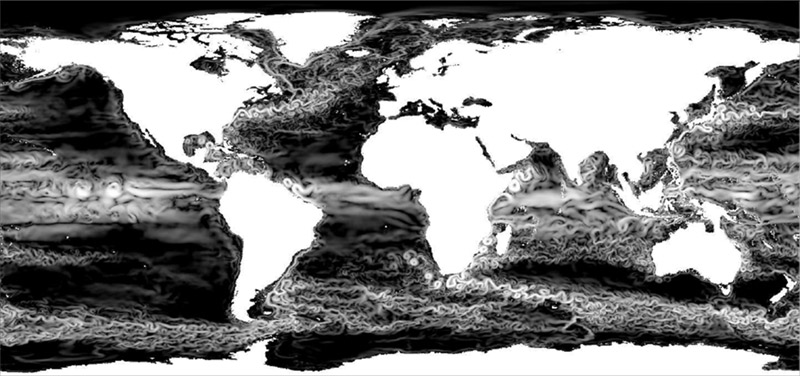
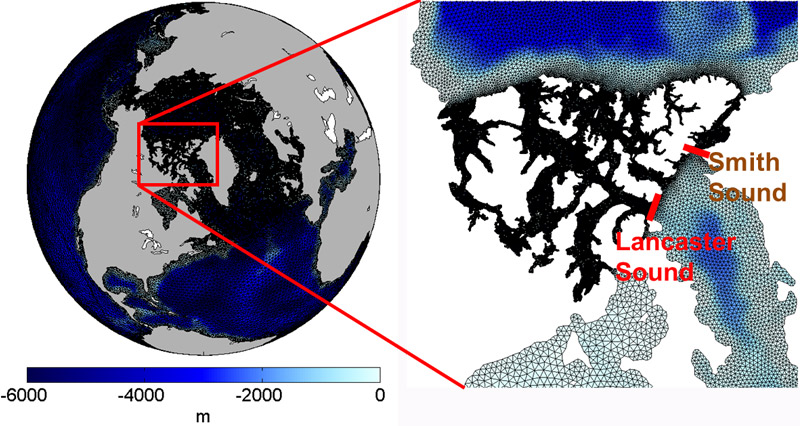
The ICON model system
The system consists of newly developed sub-systems for the atmosphere (ICON-a) and the ocean (ICON-o).
- ICON-a features non-hydrostatic dynamical core in grid point space.
- ICON-a implemented at the German Weather Service for regional and global weather forecasting.
- ICON-a applied at MPI-M using different physics packages at resolutions from 2.5 to 160 km.
- ICON-a LES simulations at 150m resolution in HD(CP)² project
- ICON-o based on similar grid structure using mimetic discretisation
- ICON-o applied at MPI-M at resolutions from 10 to 160 km
ICON-o and ICON-a are coupled by the YAC coupler to form the new Max Planck Earth System Model MPI-ESM-2.
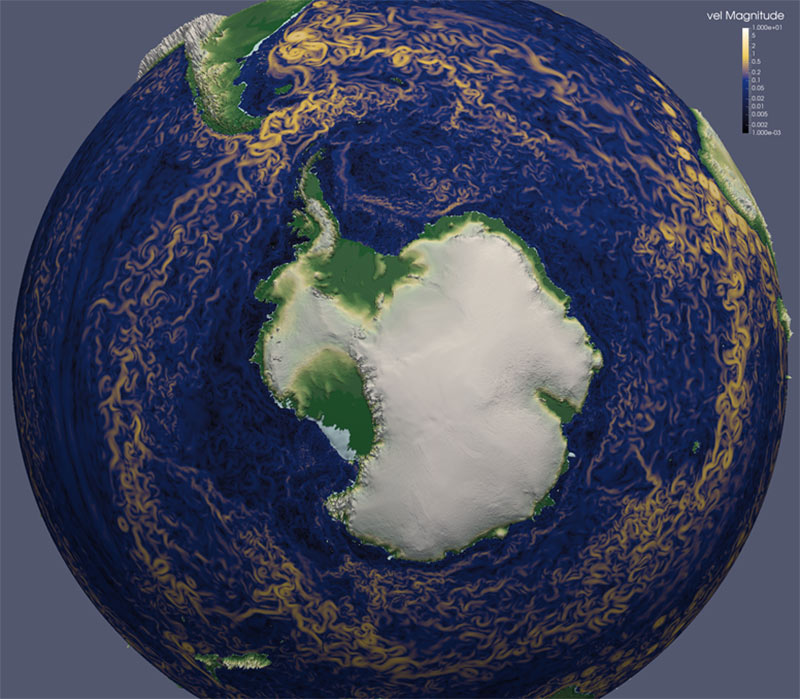
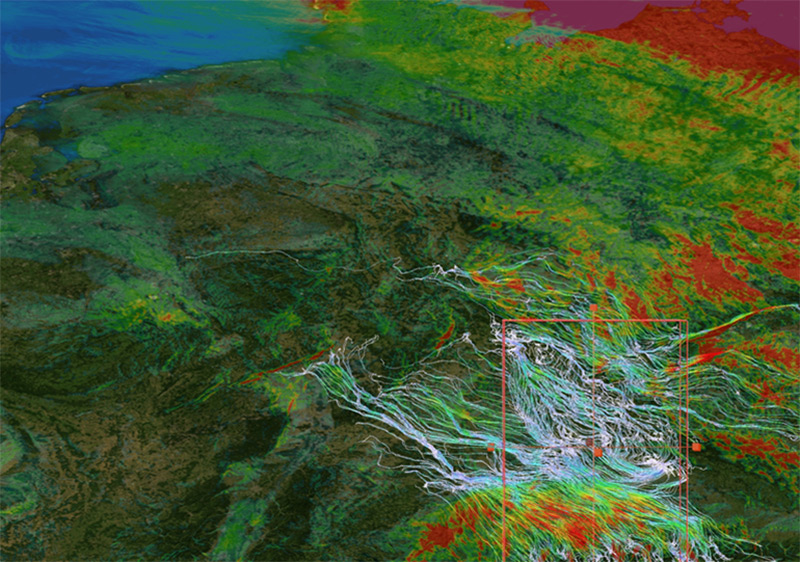
Reports
A Memory of Pre-Pandemic Times and a Glimpse at the hopefully soon-to-be Future: My Visit at MIT and the AGU Fall Meeting 2021
With two successful talks, one on my research at the CRC181 and one on my science policy activities, I am more than happy with the received exposure and appreciation of our work.
Having been in the home office for a long time during the last two years I am sure everyone wonders: Remember how things were before the virus hit? And how things will be afterwards? I was asking myself the very same questions while having a travel grant available I had won mid 2020 from the DFG research unit MS-GWaves which was still sitting in the accounts waiting to be used. My visit had been planned for a long time but had also been delayed by the pandemic. So when the US started opening up to foreign visitors in late summer 2021 I decided to try to move forward with the plan we had been setting aside for so long. And despite the restrictions and insecurities linked to long distance travel I should very soon be rewarded. On November 8 I boarded an airplane to Cambridge, Massachusetts to visit the long research partner of out group, Prof. Triantaphyllos Akylas at the Massachusetts Institute of Technology.
Our former and ongoing research project with T. R. Akylas is concerned with the background-modulated wave-wave interaction of internal gravity waves. In a previous manuscript we had been able to show that wave modulation by a sheared mean flow can significantly inhibit the energy exchange through a near-resonant triadic interaction. However, the assumptions of Boussinesq dynamics and a constant stratification limited the applicability of the findings to the atmospheric context. We thus took on the task to extend the theory to semi-incompressible dynamics with both a variable stratification and sheared mean winds. Having derived the theory beforehand we used the 5 weeks together at MIT to explore the combined effects of the modulation by the wind and the stratification on the wave interaction. Interestingly the two modulation mechanisms can counteract each other opening up the possibility of strong interactions in regions with both changing stratification and strong shear. As the tropopause region typically exhibits these features it is of particular interest to be studied. A manuscript is now in preparation and planned to be submitted later this year.
Having already traveled to the US another possibility opened for me: the in-person attendance of the fall meeting of the American Geophysical Union in New Orleans. Traveling to conferences has always been one of my favorite parts of being a scientist. I am particular fond of getting to know places and people, exchanging ideas about our research, networking among peers and like-minded people and making friends throughout the world. The idea of attending a conference on site for the first time in two years was therefore especially tempting for me. Even though it came with the huge insecurity of sharing the venue with another 10,000 people during a pandemic the stringent health policies helped keeping the participants safe and the number of infections low.
With two successful talks, one on my research at the CRC181 and one on my science policy activities, I am more than happy with the received exposure and appreciation of our work. Fostering existing connections and forging new ones additionally rendered the conference experience as a very positive one. But maybe most importantly, I also realized what I had been missing out in the past months. Even though video conferences can account for the majority of the scientific collaboration it will not be able to replace the experience of and the human relationships associated to a person to person contact. Partnerships are build on these relationships and I am hoping that there will be a time soon where we can find a way to get back together. Personally I feel motivated to move forward and make progress in ways that I had not expected when I boarded that airplane on November 8. I would therefore like to particularly thank the CRC181, the research group MS-GWaves, the WilhelmHeraeus Visiting Professorship program and not at last Prof. Ulrich Achatz and Prof. Triantaphyllos Akylas for enabling this collaboration and the conference participation for me.
Implementing new parameterizations and algorithms
A new vertical coordinate frame for our ocean model has the potential to reduce unwanted spurious mixing effects.
I’m Patrick Scholz, Post Doc at Alfred Wegener Institute and work together with Sergey Danilov at Research area S2: “Improved parameterizations and numerics in climate models”. Aim of this project part is to implement new parameterizations and algorithms to improve the energetic consistency in the ocean component of climate models. In particular I will work with the new Finite Volume Sea Ice Ocean Model (FESOM2.0) and start there to implement a new vertical coordinate frame (Arbitrary Lagrangian Eulerian, ALE), based on vertical mesh motion, that has the potential to reduce unwanted spurious mixing effects in the ocean. ALE also allows to combine different versions of vertical coordinates in a single ocean setup, which will also help to broaden the functionality of the model. Further, we will implement new parameterizations of overflows, improved numerical transport algorithms and an energetically consistent parameterization of vertical mixing.
Publications
Banerjee, T., Scholz, P., Danilov, S., Klingbeil, K. & Sidorenko, D. (2024). Split-explicit external mode solver in finite volume sea ice ocean model FESOM2. Geosci. Model Dev., accepted, doi: https://doi.org/10.5194/gmd-2023-208.
Listowski, C., Stephan, C.C., Le Pichon, A., Hauchecorne, A., Kim, Y.-H., Achatz, U. & Bölöni, G. (2024). Stratospheric gravity waves impact on infrasound transmission losses across the International Monitoring System. Pure Appl. Geophys., doi: https://doi.org/10.1007/s00024-024-03467-3.
Achatz, U., Alexander, M.J., Becker, E. et al. (2024). Atmospheric Gravity Waves: Processes and Parameterization. J. Atmos. Sci. 18, 237-262, doi: https://doi.org/10.1175/JAS-D-23-0210.1.
Wang, Q., [...], Koldunov, N., [...], Scholz, P. et al (2024). Impact of increased resolution on Arctic Ocean simulations in Ocean Model Intercomparison Project phase 2 (OMIP-2). Geosci. Model Dev. 17, 347–379, doi: https://doi.org/10.5194/gmd-17-347-2024.
Li, X., [...], Danilov, S., Koldunov, N., [...] & Jung, T. (2024). Eddy activity in the Arctic Ocean projected to surge in a warming world. Nat. Clim. Chang., doi: https://doi.org/10.1038/s41558-023-01908-w.
Achatz, U., Kim, Y.-H. & Voelker, G.S. (2023). Multi-Scale Dynamics of the Interaction Between Waves and Mean Flows: From Nonlinear WKB Theory to Gravity-Wave Parameterizations in Weather and Climate Models. J. Math. Phys. 64(11), 111101, doi: https://doi.org/10.1063/5.0165180.
Eden, C. (2023). A simple eddy potential vorticity flux closure. Journal of Advances in Modeling Earth Systems 15(10), e2023MS003711, doi: https://doi.org/10.1029/2023MS003711.
Dolaptchiev, S.D., Spichtinger, P., Baumgartner, M. & Achatz, U. (2023). Interactions between gravity waves and cirrus clouds: asymptotic modeling of wave induced ice nucleation. J. Atmos. Sci. 80(12), 2861–2879, doi: https://doi.org/10.1175/JAS-D-22-0234.1.
Shi, J., Stepanek, C., Sein, D., Streffing, J., & Lohmann, G. (2023). East Asian summer precipitation in AWI-CM3: Comparison with observations and CMIP6 models. International Journal of Climatology, 1– 16, doi: https://doi.org/10.1002/joc.8075.
Olbers, D., Pollmann, F., Patel, A. & Eden, C. (2023). A model of energy and spectral shape for the internal gravity wave field in the deep-sea – The parametric IDEMIX model. J. Phys.Oceanogr. 53(5), doi: https://doi.org/10.1175/JPO-D-22-0147.1.
Hohenegger, C., Korn, P., Brüggemann, N., Gutjahr, O., Jungclaus, J., Shevchenko, R., von Storch, J.S. et al. (2023). ICON-Sapphire: simulating the components of the Earth system and their interactions at kilometer and subkilometer scales. Geosci. Model Dev. 16, 779–811, doi: https://doi.org/10.5194/gmd-16-779-2023.
Juricke, S., Bellinghausen, K., Danilov, S., Kutsenko, A. & Oliver, M. (2023). Scale analysis on unstructured grids: Kinetic energy and dissipation power spectra on triangular meshes. J. Adv. Model Earth Sy. 15, e2022MS003280, doi: https://doi.org/10.1029/2022MS003280.
Pohlmann, H., Brune, S., Fröhlich, K., Jungclaus, J.H., Sgoff, C. & Baehr, J. (2022). Impact of ocean data assimilation on climate predictions with ICON-ESM. Clim. Dyn., doi: https://doi.org/10.1007/s00382-022-06558-w.
Mehlmann, C. & Gutjahr, O. (2022). Discretization of sea ice dynamics in the tangent plane to the sphere by a CD-grid-type finite element. J. Adv. Model Earth Sy., doi: https://doi.org/10.1029/2022MS003010.
Danilov, S. (2022). On the resolution of triangular meshes. J. Adv. Model Earth Sy. 14, e2022MS003177, doi: https://doi.org/10.1029/2022MS003177.
Streffing, J., Scholz, P., Koldunov, N., Danilov, S., Juricke, S., Jung, T. et al. (2022). AWI-CM3 coupled climate model: description and evaluation experiments for a prototype post-CMIP6 model. Geosci. Model Dev. 15, 6399–6427, doi: https://doi.org/10.5194/gmd-15-6399-2022.
Ionita, M., Nagavciuc, V., Scholz, P. & Dima, M. (2022). Long-term drought intensification over Europe driven by the weakening trend of the Atlantic Meridional Overturning Circulation. J. Hydrol. Reg. Stud. 42, 101176, doi: https://doi.org/10.1016/j.ejrh.2022.101176.
Uchida, T., Danilov, S., Koldunov, N. et al. (2022). Cloud-based framework for inter-comparing submesoscale-permitting realistic ocean models. Geosci. Model Dev. 15, 5829–5856, doi: https://doi.org/10.5194/gmd-15-5829-2022.
Chouksey, M., Griesel, A., Eden, C. & Steinfeldt, R. (2022). Transit Time Distributions and Ventilation Pathways Using CFCs and Lagrangian Backtracking in the South Atlantic of an Eddying Ocean Model. J. Phys. Oceanogr. 52(7), 1531–1548, doi: https://doi.org/10.1175/JPO-D-21-0070.1.
Gutjahr, O., Jungclaus, J. H., Brüggemann, N., Haak, H. & Marotzke, J. (2022). Air-Sea Interactions and Water Mass Transformation During a Katabatic Storm in the Irminger Sea. J. Geophys. Res.- Oceans 127, e2021JC018075, doi: https://doi.org/10.1029/2021JC018075.
Nagavciuc, V., Scholz, P. & Ionita, M. (2022). Hotspots for warm and dry summers in Romania. Nat. Hazards Earth Syst. Sci. 22(4), 1347–1369, doi: https://doi.org/10.5194/nhess-22-1347-2022.
Jungclaus, J. H., Brüggemann, N., Gutjahr, O., von Storch, J.S., Korn, P. et al. (2022). The ICON Earth System Model Version 1.0. J. Adv. Model Earth Sy. 14, e2021MS002813, doi: https://doi.org/10.1029/2021MS002813.
Khosravi, N., Wang, Q., Koldunov, N., Danilov, S., Jung, T. et al. (2022). The Arctic Ocean in CMIP6 models: Biases and projected changes in temperature and salinity. Earth's Future 10(2), e2021EF002282, doi: https://doi.org/10.1029/2021EF002282.
Danilov, S., Mehlmann, C. & Fofonova, V. (2022). On discretizing sea-ice dynamics on triangular meshes using vertex, cell or edge velocities. Ocean Modelling 170, 101937, doi: https://doi.org/10.1016/j.ocemod.2021.101937.
Dima, M., Lohmann, G., Scholz, P. et al. (2022). AMOC modes linked with distinct North Atlantic deep water formation sites. Clim. Dyn. 59, 837–849, doi: https://doi.org/10.1007/s00382-022-06156-w.
Scholz, P., Sidorenko, D., Danilov, S., Wang, Q., Koldunov, N., Sein, D., & Jung, T. (2022). Assessment of the Finite-VolumE Sea ice–Ocean Model (FESOM2.0) – Part 2: Partial bottom cells, embedded sea ice and vertical mixing library CVMix. Geosci. Model Dev. 15(2), 335–363, doi: https://doi.org/10.5194/gmd-15-335-2022.
Schmid, F., Gagarina, E., Klein, R. & Achatz, U. (2021). Toward a Numerical Laboratory for Investigations of Gravity Wave–Mean Flow Interactions in the Atmosphere. Mon. Wea. Rev. 149, 4005–4026, doi: https://doi.org/10.1175/MWR-D-21-0126.1.
Danilov, S., Koldunov, N., Sidorenko, D. et al. (2021). On the damping time scale of EVP sea ice dynamics. J. Adv. Model Earth Sy. 13(10), e2021MS002561, doi: https://doi.org/10.1029/2021MS002561.
Sidorenko, D., Danilov, S., Streffing, J., Juricke, S., Jung, T., Koldunov, N. et al. (2021). AMOC variability and watermass transformations in the AWI climate model. J. Adv. Model Earth Sy. 13, e2021MS002582, doi: https://doi.org/10.1029/2021MS002582.
Gutjahr, O., Brüggemann, N., Haak, H., Jungclaus, J. H., Putrasahan, D. A., Lohmann, K. & von Storch, J.-S. (2021). Comparison of ocean vertical mixing schemes in the Max Planck Institute Earth System Model (MPI-ESM1.2). Geosci. Model Dev., 14, 2317–2349, doi: https://doi.org/10.5194/gmd-14-2317-2021.
Ionita, M., Dima, M., Scholz, P. et al. (2021). Past megadroughts in central Europe were longer, more severe and less warm than modern droughts. Commun. Earth Environ. 2, 61, doi: https://doi.org/10.1038/s43247-021-00130-w.
Georgiou, S., Ypma, S. L., Brüggemann, N., Sayol, J-M., van der Boog, C. G., Spence, P., et al. (2021). Direct and indirect pathways of convected water masses and their impacts on the overturning dynamics of the Labrador Sea. J. Geophys. Res. Oceans 126, e2020JC01665, doi: https://doi.org/10.1029/2020JC016654.
Sidorenko, D., Danilov, S., Koldunov, N. et al. (2020). AMOC, Water Mass Transformations, and Their Responses to Changing Resolution in the Finite-VolumE Sea Ice-Ocean Model. J. Adv. Model Earth Sy. 12(12), e2020MS00231, doi: https://doi.org/10.1029/2020MS002317.
Chassignet, E.P., Yeager, S.G., Koldunov, N. et al. (2020). Impact of horizontal resolution on global ocean-sea-ice model simulations based on the experimental protocols of the Ocean Model Intercomparison Project phase 2 (OMIP-2). Geosci. Model Dev. 13, 4595–4637, doi: https://doi.org/10.5194/gmd-2019-374.
Semmler, T., Danilov, S., Koldunov, N. et al. (2020). Simulations for CMIP6 With the AWI Climate Model AWI-CM-1-1. J. Adv. Model Earth Sy. 12(9), doi: https://doi.org/10.1029/2019MS002009.
Tsujino, H., Urakawa, S., Koldunov, N., et al. (2020). Evaluation of global ocean–sea-ice model simulations based on the experimental protocols of the Ocean Model Intercomparison Project phase 2 (OMIP-2). Geosci. Model Dev. 13(8), 3643–3708, doi: https://doi.org/10.5194/gmd-13-3643-2020.
Sidorenko, D., Danilov, S., Koldunov, N. et al. (2020). Simple algorithms to compute meridional overturning and barotropic streamfunction on unstructured meshes. Geosci. Model Dev. 13(7), doi: https://doi.org/10.5194/gmd-13-3337-2020.
Wang, Q., Koldunov, N., Danilov, S. et al. (2020). Eddy Kinetic Energy in the Arctic Ocean from a Global Simulation with a 1-km Arctic. Geophys. Res. Lett. 47, e2020GL088550, doi: https://doi.org/10.1029/2020GL088550.
de la Vara, A., Cabos, W., Sein, D., Sidorenko, D., Koldunov, N., Koseki, S., Soares, P M. M., & Danilov, S. (2020). On the impact of atmospheric vs oceanic resolutions on the representation of the sea surface temperature in the South Eastern Tropical Atlantic. Clim. Dyn., doi: https://doi.org/10.1007/s00382-020-05256-9.
Georgiou, S., Ypma, S. L., Brüggemann, N., Sayol, J. M., Pietrzak, J. D., & Katsman, C. A. (2020). Pathways of the water masses exiting the Labrador Sea: The importance of boundary-interior exchanges. Ocean Model., 101623, https://doi.org/10.1016/j.ocemod.2020.101623.
Smolentseva, M., & Danilov, S. (2020). Comparison of several high-order advection schemes for vertex-based triangular discretization. Ocean Dyn., 70(4), 463-479, https://doi.org/10.1007/s10236-019-01337-4 .
Wang, Q., Wekerle, C., Wang, X., Danilov, S., Koldunov, N., Sein, D., ... & Jung, T. (2020). Intensification of the Atlantic Water supply to the Arctic Ocean through Fram Strait induced by Arctic sea ice decline. Geophys. Res. Lett., https://doi.org/10.1029/2019GL086682.
Scholz, P., Sidorenko, D., Gurses, O., Danilov, S., Koldunov, N., Wang, Q., Sein, D., Smolentseva, M., Rakowsky, N. & Jung, T. (2019). Assessment of the Finite VolumE Sea Ice Ocean Model (FESOM2.0), Part I: Description of selected key model elements and comparison to its predecessor version, Geosci. Model Dev., https://doi.org/10.5194/gmd-2018-329.
Sidorenko, D., Goessling, H. F., Koldunov, N. V., Scholz, P., Danilov, S., Barbi, D., Cabos, W., Gurses, O. Harig, S., Hinrichs, C., Juricke, S., Lohmann, G., Losch, M., Mu, L., Rackow, T., Rakowsky, N., Sein, D., Semmler, T., Shi, X., Stepanek, C., Streffing, J., Wang, Q., Wekerle, C., Yang, H. & Jung, T. ( 2019). Evaluation of FESOM2.0 coupled to ECHAM6.3: Pre‐industrial and HighResMIP simulations.J. Adv. Model Earth Sy., 11. doi:10.1029/2019MS001696.
Brüggemann, N., & Katsman, C. A. (2019). Dynamics of downwelling in an eddying marginal sea: contrasting the Eulerian and the isopycnal perspective. J. Phys. Oceanogr., https://doi.org/10.1175/JPO-D-19-0090.1.
Koldunov, N. V., Aizinger, V., Rakowsky, N., Scholz, P., Sidorenko, D., Danilov, S. & Jung, T. (2019). Scalability and some optimization of the Finite-volumE Sea ice-Ocean Model, Version 2.0 (FESOM2), Geosci. Model Dev., 12, 3991–4012, https://doi.org/10.5194/gmd-12-3991-2019.
Wang, Q., Wang, X., Wekerle, C., Danilov, S., Jung, T., Koldunov, N., Lind, S., Sein, D., Shu, Q. & Sidorenko D. (2019). Ocean heat transport into the Barents Sea: Distinct controls on the upward trend and interannual variability. Geophys. Res. Lett., 46. doi.org/10.1029/2019GL083837.
Gutjahr, O., Putrasahan, D., Lohmann, K., Jungclaus, J. H., von Storch, J. S., Brüggemann, N., Haak, H., & Stössel, A. (2019). Max Planck Institute Earth System Model (MPI-ESM1. 2) for High-Resolution Model Intercomparison Project (HighResMIP). Geophys. Mod. Develop., 12, 3241-3281, doi.org/10.5194/gmd-12-3241-2019.
Koldunov, N., S. Danilov, D. Sidorenko, N. Hutter, M. Losch, H. Goessling, N. Rakowsky, P. Scholz, D. Sein, Q. Wang and T. Jung (2019). Fast EVP solutions in a high-resolution sea ice model. Adv. Model. Earth Syst., 11, doi.org/10.1029/2018MS001485
Georgiou, S., van der Boog, C. G., Brüggemann, N., Ypma, S. L., Pietrzak, J. D., & Katsman, C. A. (2019). On the interplay between downwelling, deep convection and mesoscale eddies in the Labrador Sea. Ocean Model., 135, 56-70, https://doi.org/10.1016/j.ocemod.2019.02.004 .
Pollmann, F., J. Nycander, C. Eden and D. Olbers (2019). Resolving the horizontal direction of internal tide generation. J. Fluid Mech., Vol. 864, pp. 381-407, doi: https://doi.org/10.1017/jfm.2019.9.
Jingwei, Koldunov, N., Remedio, Sein, Rechid, Zhi, Jiang, Xu, Zhu, Fraedrich, Jacob. Downstream Effect of Hengduan Mountains on East China in the REMO Regional Climate Model. Theor. Appl. Climatol.,135: 1641, doi: doi.org/10.1007/s00704-018-2721-0.
Olbers, D., Eden, C., Becker, E., Pollmann, F., & Jungclaus, J. (2019). The IDEMIX Model: Parameterization of Internal Gravity Waves for Circulation Models of Ocean and Atmosphere. In Energy Transfers in Atmosphere and Ocean (pp. 87-125). Springer, Cham., doi: https://doi.org/10.1007/978-3-030-05704-6_3.
Wang, Q., Wekerle, C., Danilov, S., Sidorenko, D., Koldunov, N., Sein, D., ... & Jung, T. (2018). Recent sea ice decline did not significantly increase the total liquid freshwater content of the Arctic Ocean. J. Climate. doi: https://doi.org/10.1175/JCLI-D-18-0237.1.
Sidorenko, D., Koldunov, N., Wang, Q., Danilov, S., Goessling, H. F., Gurses, O., ... & Jung, T. (2018). Influence of a salt plume parameterization in a coupled climate model. J. Adv. Model Earth Sy., doi: https://doi.org/10.1029/2018MS001291.
Sein, D. V., Koldunov, N. V., Danilov, S., Sidorenko, D., Wekerle, C., Cabos, W., ... & Jung, T. (2018). The relative influence of atmospheric and oceanic model resolution on the circulation of the North Atlantic Ocean in a coupled climate model.J. Adv. Model. Earth Sy., doi: https://doi.org/10.1029/2018MS001327.
Chouksey, M., Eden, C., & Brüggemann, N. (2018). Internal gravity wave emission in different dynamical regimes. J. Phys. Oceanogr., 48(8), 1709-1730, doi: https://doi.org/10.1175/JPO-D-17-0158.1.
